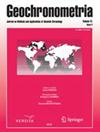Historical building dating: A multidisciplinary study of the Convento de São Francisco (Coimbra, Portugal)
IF 0.9
4区 地球科学
Q3 Earth and Planetary Sciences
引用次数: 10
Abstract
Abstract Cross-dating of bricks and mortars from historical building, through thermal (TL) and optically stimulated (OSL) luminescence have achieved good accuracy and precision. However this approach is, in many cases, not exhaustive especially for buildings with different construction phases closely temporally spaced to each other. The uncertainties of experimental data added to the reuse of old bricks and/or the presence of mortars applied on restorations represent the main limits to obtain the complete chronology. In the case of the Convento de S. Francisco (Coimbra, Portugal), the dating results were crossed with the stratigraphic study of the building, mineralogical characterization by XRD and colorimetric data of the mortar samples. Thanks to luminescence ages, mineralogical composition and color specification, two phases of construction were identified: the first from the 17th century and the first half of the 18th century and the second from the second half of the 18th century to the first half of the 19th century. These results were confirmed by mineralogical characterization and colorimetric measurements of mortars that identify two different types of materials in aggregate/binder ratio terms and superficial optical characteristics.历史建筑年代测定:对弗朗西斯科修道院(葡萄牙科英布拉)的多学科研究
摘要利用热释光和光激发光法对历史建筑砖浆进行交叉测年,取得了较好的准确性和精密度。然而,在许多情况下,这种方法并不详尽,特别是对于具有不同施工阶段的建筑物,它们在时间上彼此紧密间隔。实验数据的不确定性,加上旧砖的再利用和/或修复中使用的砂浆的存在,是获得完整年表的主要限制。在convto de S. Francisco(葡萄牙科英布拉)的案例中,测年结果与建筑物的地层学研究、XRD矿物学表征和砂浆样品的比色数据相交叉。根据发光年龄、矿物成分和颜色规格,确定了两个建设阶段:第一个阶段从17世纪到18世纪上半叶,第二个阶段从18世纪下半叶到19世纪上半叶。这些结果通过矿物学表征和砂浆的比色测量得到证实,砂浆在骨料/粘合剂比和表面光学特性方面识别出两种不同类型的材料。
本文章由计算机程序翻译,如有差异,请以英文原文为准。
求助全文
约1分钟内获得全文
求助全文
来源期刊

Geochronometria
地学-地球科学综合
CiteScore
2.20
自引率
0.00%
发文量
1
审稿时长
>12 weeks
期刊介绍:
Geochronometria is aimed at integrating scientists developing different methods of absolute chronology and using them in different fields of earth and other natural sciences and archaeology. The methods in use are e.g. radiocarbon, stable isotopes, isotopes of natural decay series, optically stimulated luminescence, thermoluminescence, EPR/ESR, dendrochronology, varve chronology. The journal publishes papers that are devoted to developing the dating methods as well as studies concentrating on their applications in geology, palaeoclimatology, palaeobiology, palaeohydrology, geocgraphy and archaeology etc.
 求助内容:
求助内容: 应助结果提醒方式:
应助结果提醒方式:


